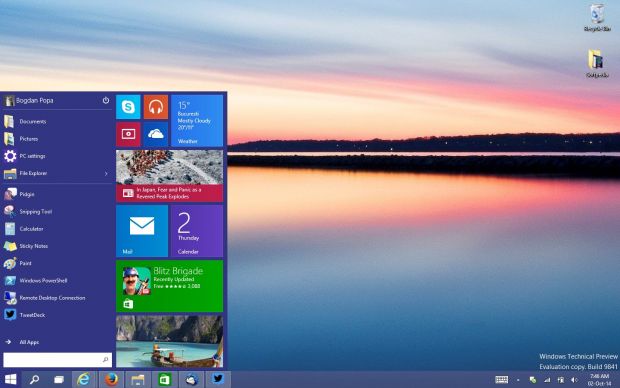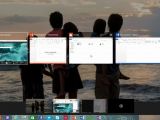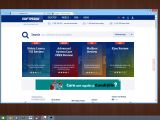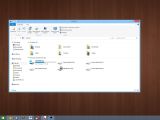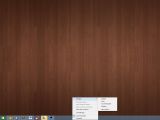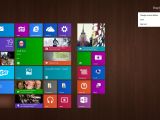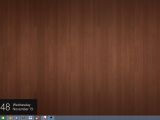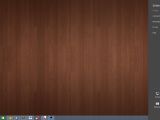Microsoft released Windows 10 Technical Preview in early October, and millions of users rushed to download and install the very first build, even though the company said from the very beginning that it was only designed for those experienced and for developers.
In a recent statement, Redmond revealed that no less than 1 million users actually deployed Windows 10 Technical Preview on their computers, based on figures collected from the Windows Insider Program. But there’s no doubt that these stats are bigger, especially when taking into account that users could also download the new OS without registering for the program.
As you most likely noticed in the last couple of months, we also installed the Technical Preview here at Softpedia and deployed the very latest improvements as soon as they were made available to everyone, reporting to you every single change that was made as part of these updates.
Before going further, I need to explain this out. Even though Microsoft clearly stated that Windows 10 Technical Preview was not supposed to be an everyday operating system, we used it as our main platform, just to determine its stability and the impact it has on user experience.
And after two months of using Windows 10 Technical Preview every day, I finally decided to go back to Windows 8.1 for two different reasons: one – because the company won’t release any other update for Windows 10 until early 2015, and two – in order to see how exactly one would feel when downgrading from Microsoft’s latest operating system to its predecessor.
Really missing the Start menu
To be clear, we weren’t among users who asked Microsoft to bring back the Start menu in modern Windows and I actually like changes, so the Start screen wasn’t such a terrible feature in Windows 8 and 8.1. But once we installed Windows 10 Technical Preview, the Start menu certainly made us feel like home.
I’ve heard users claiming that without a Start menu, the Windows desktop makes absolutely no sense. Others got used to the Start screen and never wanted the Start menu to return.
But after using both Windows 8.1 and Windows 10 so much, it’s pretty clear that it is just a matter of time until you get used to a specific feature. The Windows 10 Start menu is really great and it’s surely a small shock to get back to the Start screen, but this isn’t something that you can’t live without. I do like the Start menu, but the Start screen also does its job really well.
The current design of the Start menu isn’t the best, and just by looking at feedback received from users, it’s really obvious that certain improvements still need be made. But the final purpose of the Start menu is certainly achieved: it lets you access installed app faster and easier from the desktop.
I miss that in Windows 8.1 and every time I hit the Start button I expect the Start menu to show up, but again, it’s all just a matter of time until everyone gets used to this configuration.
Task view and multiple desktops
Task view and multiple desktops are two of the features that are available in the Windows 10 Technical Preview and I must admit that some of us here at Softpedia actually liked them.
It’s all a matter of time, but for those who used them on a daily basis, going back to Windows 8.1 clearly means fewer features and affected productivity.
Multiple desktops definitely come in handy when trying to organize running app and windows better, and since on Windows 8.1 there’s no such feature, some might really miss the Windows 10 desktop functionality.
There are third-party apps that can do that in a pretty similar way, but it’s always better to have everything integrated into the operating system without the need to move a finger to deploy other tools.
Borderless windows and visual effects
In terms of looks, there’s no doubt that Windows 8.1 is one step behind its successor. Windows 10 comes with new visual effects when opening, closing, minimizing, and maximizing windows, and the new Technical Preview build 9879 makes them work even more smoothly.
Borderless windows also look really well on a revamped desktop, and after going back to Windows 8.1, this is actually one of the first differences that you might notice. Everything looks ugly on Windows 8.1 and it’s just surprising to see how significantly a small addition such as borderless windows improves the overall look of the operating system.
The good thing is that Windows 8.1 feels snappier and loads faster than Windows 10. But this is something to be expected since Windows 10 is still in development phase, while Windows 8.1 has already received several performance improvements in the last 12 months.
Overall, simply going back from Windows 10 to Windows 8.1 proves you that Microsoft’s operating system goes in the right direction. Redmond improves its desktop platform in a very effective way, and even though it can’t please everybody, most of these changes come in really handy to the majority of users.
Before ending the article, here’s a summary of what we liked and didn’t like when switching back to Windows 8.1.
What we liked:
- Windows 8.1 is faster and more stable - Apps work more smoothly and load faster on Windows 8.1 - There is no notification center near system tray (pretty useless in Windows 10) - No search button in the taskbar (in Windows 10 you need to manually disable it) - OneDrive uses the same old placeholder system in Windows 8.1 - Live tiles seem to work properly every time on Windows 8.1’s Start screen
What we missed:
- Windows 10’s borderless icons - Visual effects for opening and closing windows - Multiple desktops - The Start menu - The search box in the Start menu - The new Windows 10 icons - The built-in MKV support
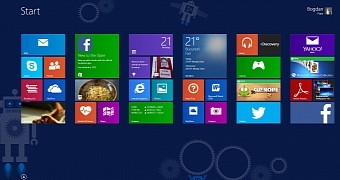
 14 DAY TRIAL //
14 DAY TRIAL // 